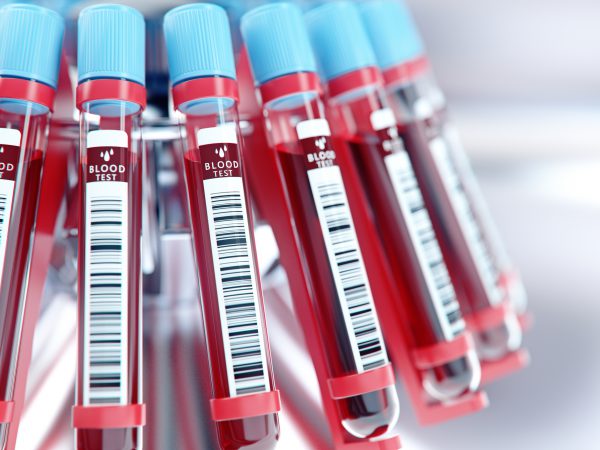Addressing Cancer in a Graying America
Guest Post by Robert L. Strausberg, PhD
Ludwig Institute for Cancer Research
For cancer research enthusiasts, the AACR Cancer Progress Report 2014 released last month served up something of a feast for thought. The item that particularly caught my eye, though, happens to be as unsurprising as it is startling: the prediction that more than 585,000 people in the United States will die from cancer this year. Without more research and advances for patients, that number is expected to increase dramatically in coming years.
This is not surprising because we all know people are living longer, and cancer is typically a disease of old age. On the other hand, the numbers are startling not only for their magnitude but also because half of such deaths should be entirely preventable, even today.
Given the numbers, you would think that everybody is scrambling to find new ways to prevent cancer. Well, think again. The National Cancer Institute and other agencies are indeed funding prevention research. But efforts are nowhere near where they ought to be given the approaching tsunami of aging citizens. The bulk of cancer research funding from both public and private sources continues, for a variety of reasons, to focus on the treatment of cancer, not its prevention. This pattern is reflected worldwide, and it should change.
Fortunately, as was abundantly clear at the AACR’s recent International Conference on Frontiers in Cancer Prevention Research, there has never been a better time to be in this field of research. Several decades of dedicated investigation have yielded mountains of data on how tumors get their start and become increasingly malignant.
In a bracing review published in Science a couple of years ago, Ludwig Johns Hopkins directors Bert Vogelstein and Ken Kinzler and their colleagues pointed out that most malignant tumors develop over two to three decades and, for all their diversity, are driven by two to eight genetic alterations that generally affect a dozen defined signaling pathways. Over most of that period budding cancers are eminently treatable.
Early detection can, in effect, be prevention. But for that to become a reality, the wealth locked up in those mountains of data will have to be mined and refined to devise reliable tests that detect premalignant lesions or early stage tumors. Those tests will then have to be vetted in clinical studies.
Cancer screening has lately become controversial due to the risks, inaccuracies, uncertainties, and overdiagnoses associated with many of today’s tests. But I believe we are at the earliest stages of a cancer detection revolution—one built on the solid foundations of all we have learned over the past half century of basic research. Combined with that knowledge, advances in our ability to isolate and analyze rare circulating tumor DNA and other cancer markers from blood or bodily secretions are already leading to the development of reliable, minimally invasive tests that can be done routinely to catch cancers early.
Ludwig’s Vogelstein and Kinzler are leading several efforts to advance genome-based tests for cervical, uterine, pancreatic, and other cancers. Funded through a partnership between Ludwig and the Hilton Foundation, they are also collaborating with Peter Gibbs of Ludwig’s Melbourne Branch to evaluate the use of circulating tumor DNA as a screen for CRC and its recurrence. Similarly, Ludwig Stanford researchers led by Maximilian Diehn recently reported that by analyzing circulating tumor DNA they detected stage 2 and higher lung cancers with absolute accuracy, and stage 1 lung cancers half the time.
As was also clear at the Frontiers conference, genetic analysis isn’t the only discipline that can transform cancer prevention. Growing evidence that long-term, low-dose aspirin can help prevent cancers of the esophagus, prostate, stomach, and colon (among others) represents just the tip of a vast chemoprevention iceberg.
Very few medicines are used today to prevent cancer, owing in part to concerns about side effects, poor business incentive to develop such agents, and the lengthy clinical studies and high expense their development entails. But with targeted drugs for cancer multiplying, and our knowledge of the molecular changes that fuel cancer rapidly expanding, how many such therapies might be appropriately repurposed for prevention?
Or how, for that matter, might the immune system be better recruited to this eminently sensible cause? Anti-cancer vaccines have so far marshaled the immune response against chronic viral infections—human papillomavirus for cervical cancer and hepatitis B virus for liver cancer—and a few efforts are underway to make preventive vaccines against tumor antigens. But an increasingly sophisticated understanding of the immune system’s regulation is already yielding transformative cancer immunotherapies, and this knowledge could be more systematically exploited to advance prevention.
Unfortunately, far too little of this will happen without a concerted push to put cancer prevention at the top of the global research agenda. Testing such hypotheses won’t be easy, and it will require the coordination of multidisciplinary teams. It will also cost a pretty sum. But that expense will pale in comparison to the cost of staying the current course: NCI researchers estimate that by 2020 the annual medical cost of cancer care for the US alone will reach $158 billion or more. What will that bill look like 15 years later? Or a half century from now?
Robert L. Strausberg, PhD, joined the Ludwig Institute for Cancer Research in 2010 as executive director of collaborative sciences. His scientific activities have for more than two decades focused on interdisciplinary human genome research to improve the health of people worldwide through disease prevention and intervention. Before joining Ludwig, Strausberg served as deputy director of the J. Craig Venter Institute (JCVI) as well as the two research institutes that formed the JCVI—The Center for Advancement of Genomics, where he was president, and The Institute for Genomic Research, where he was vice president for research. Strausberg previously served at the U.S. National Institutes of Health in several capacities, including as director of the Cancer Genomics Office at the National Cancer Institute.
Cover photo: “It’s all about love” by Candida.Performa is licensed under CC BY 2.0 via flickr




